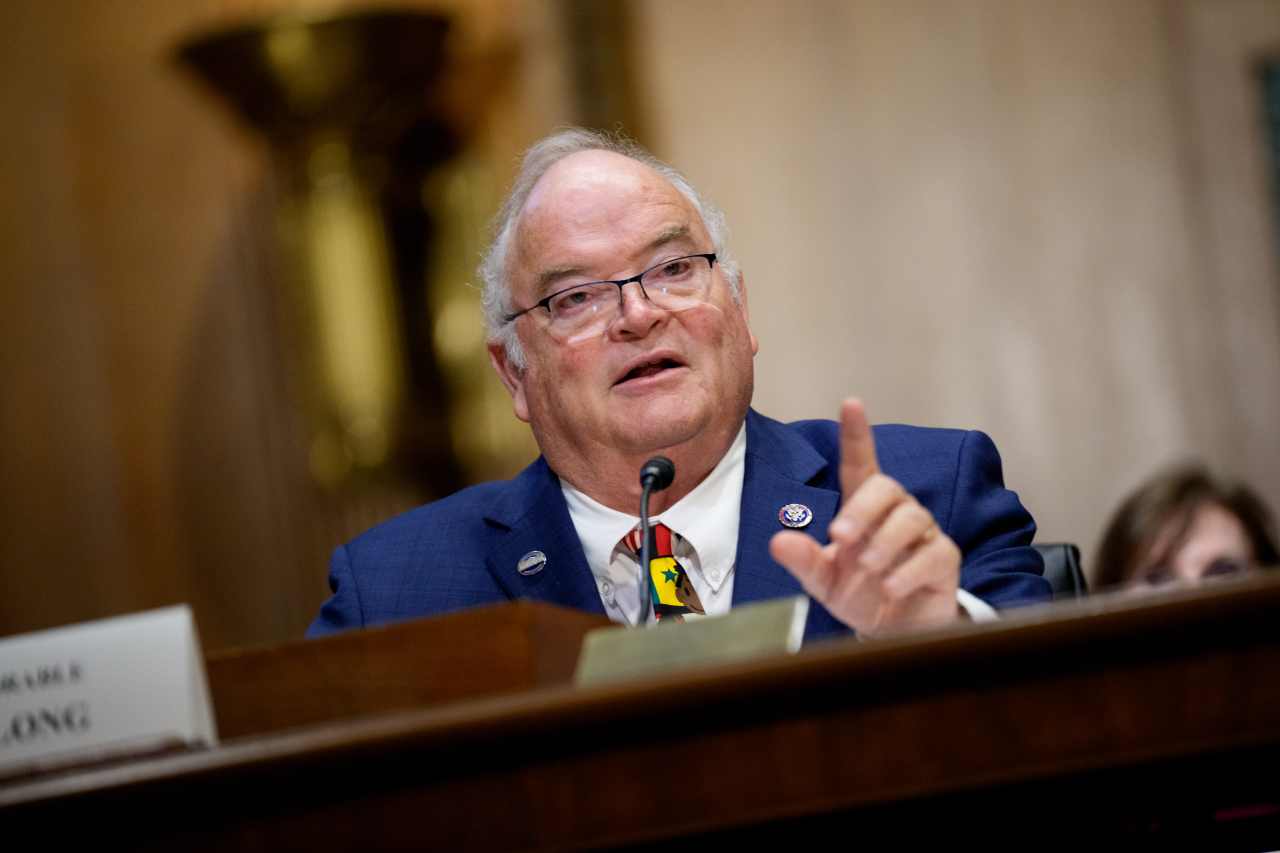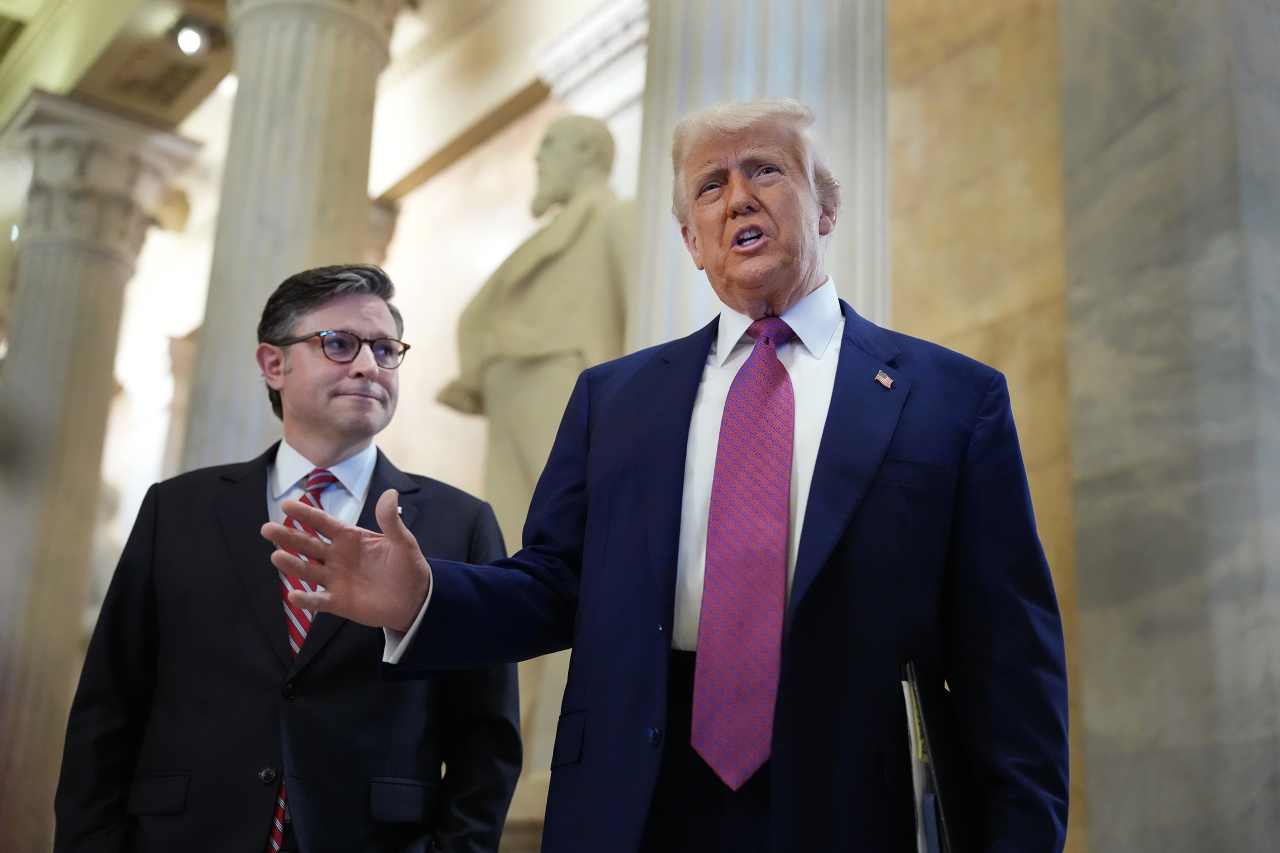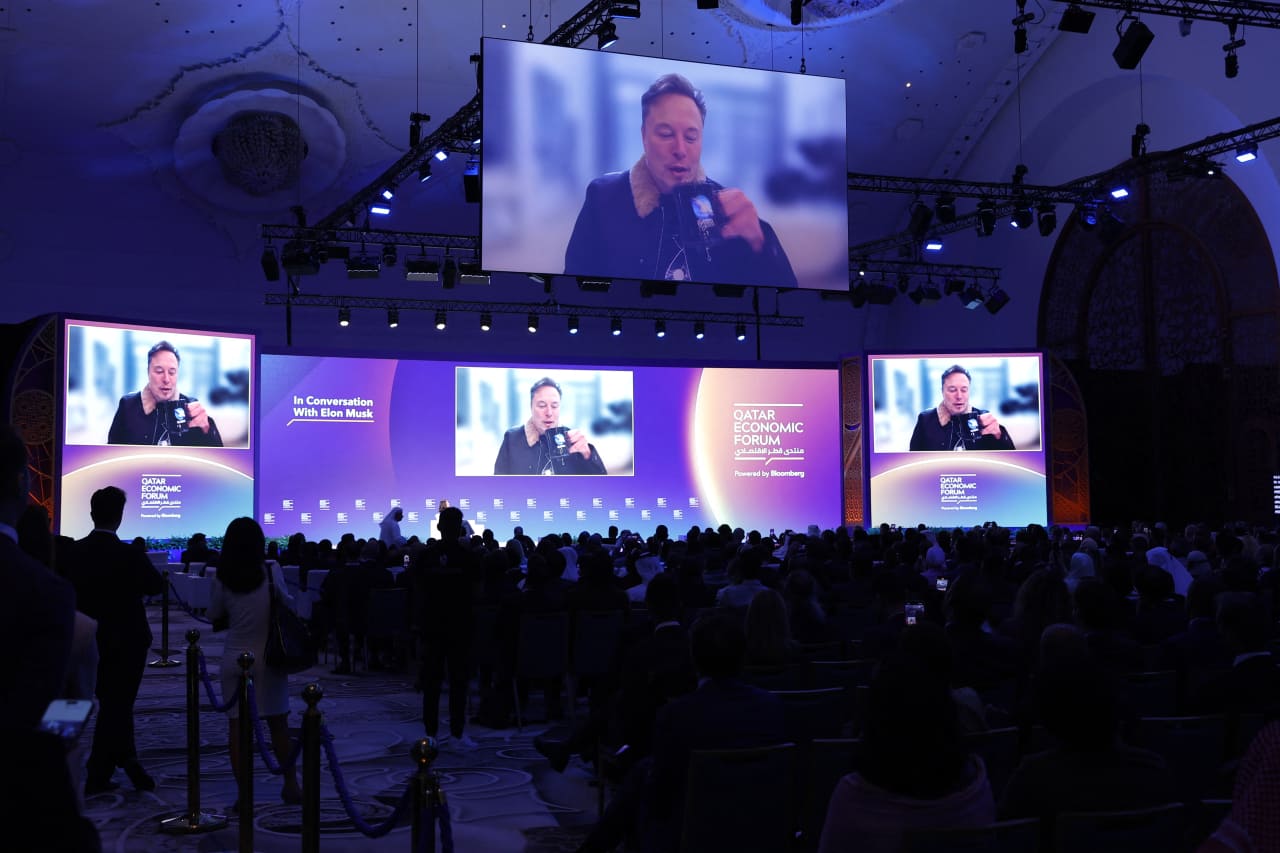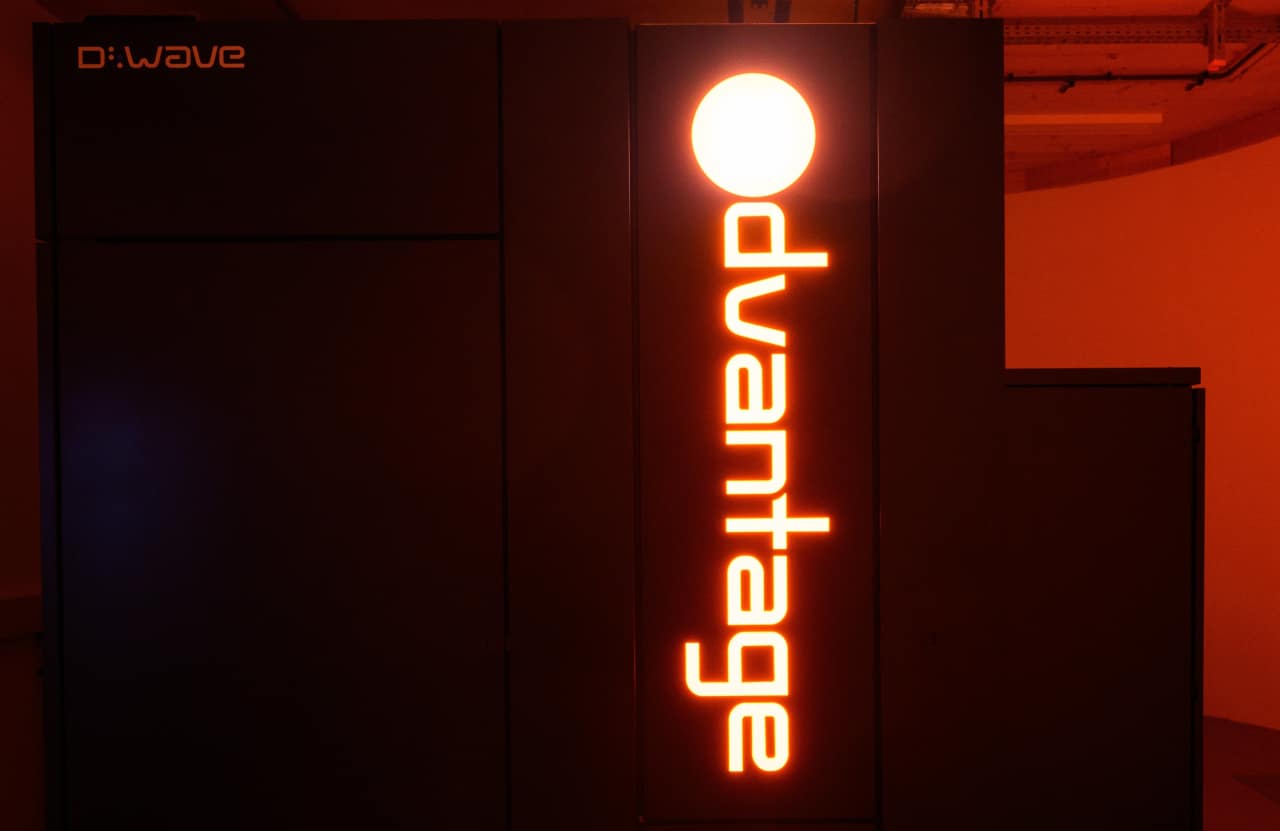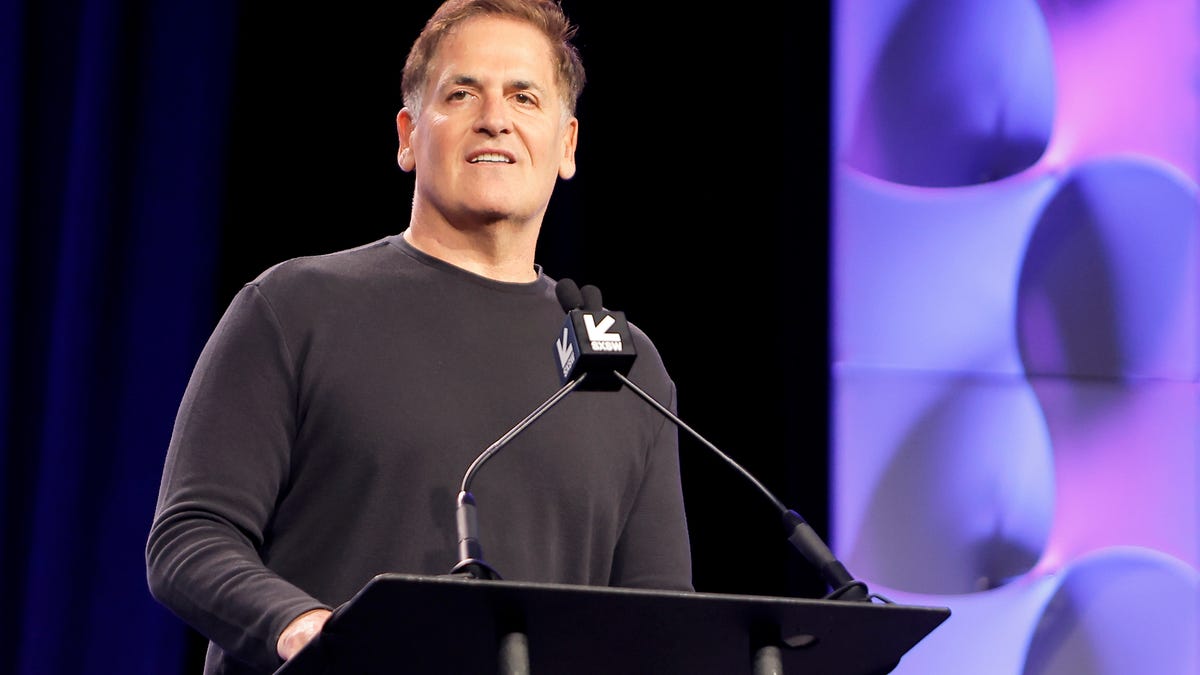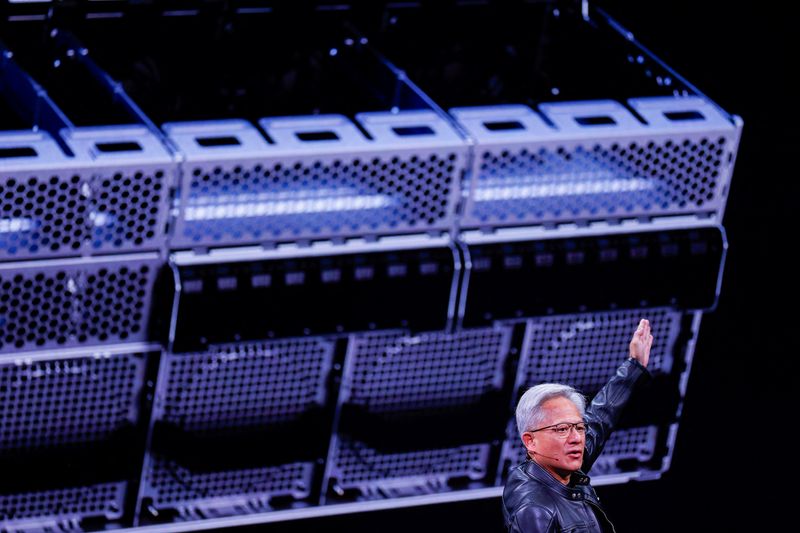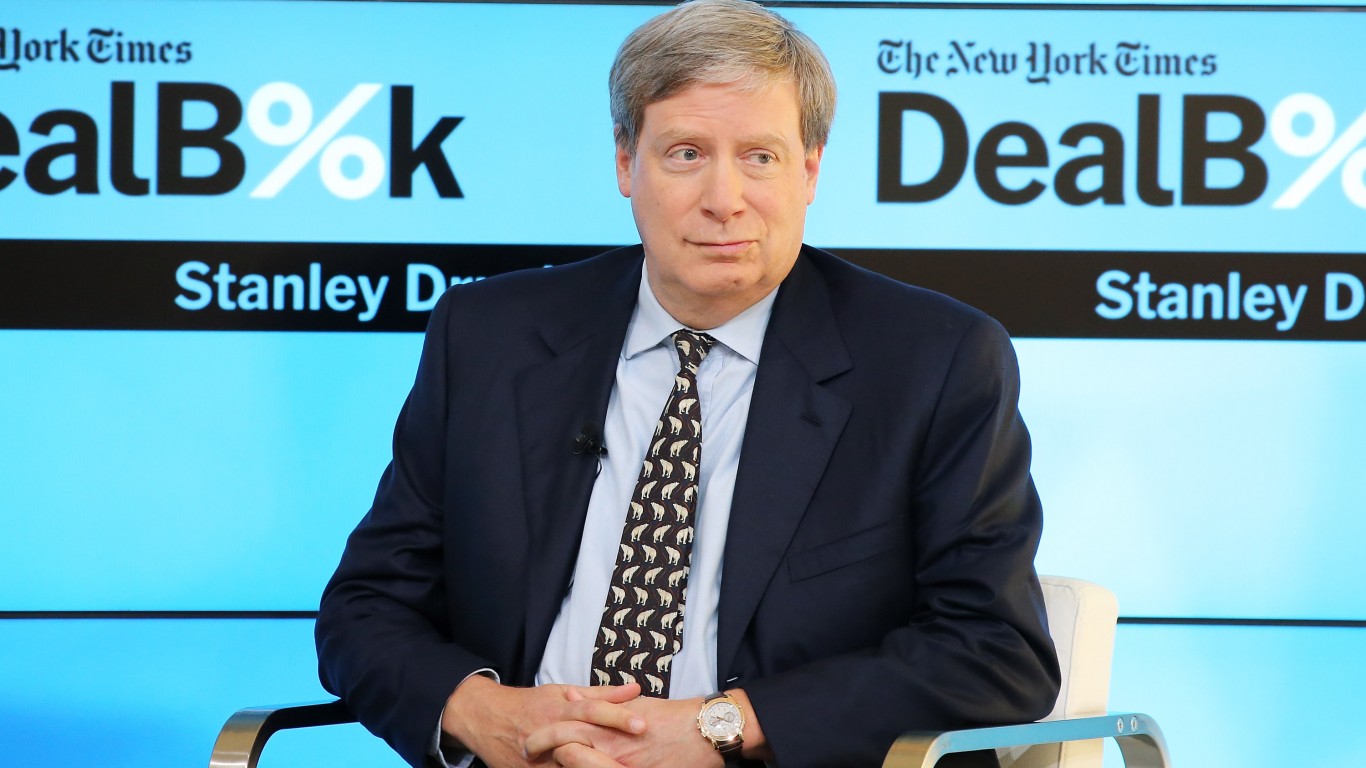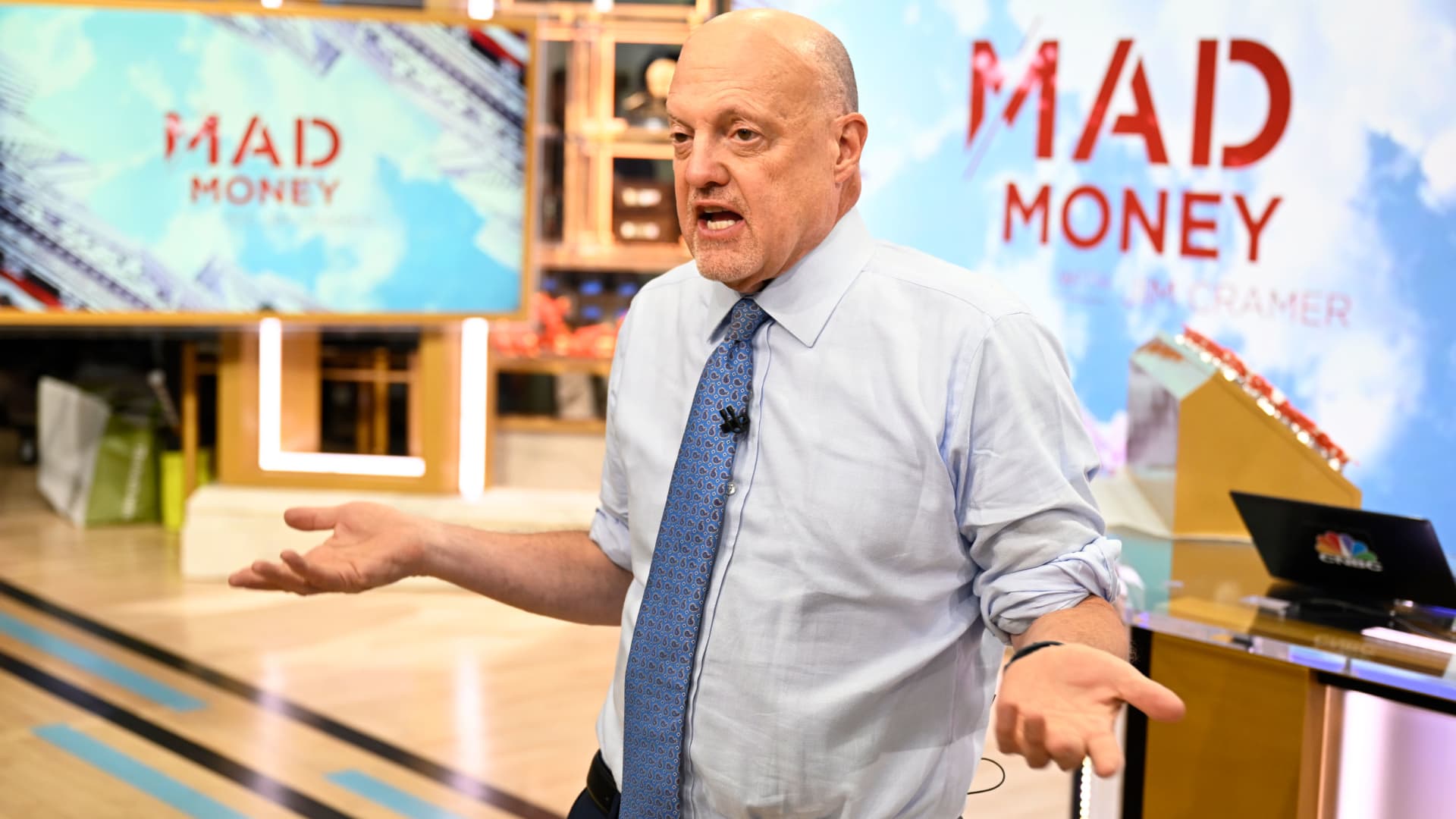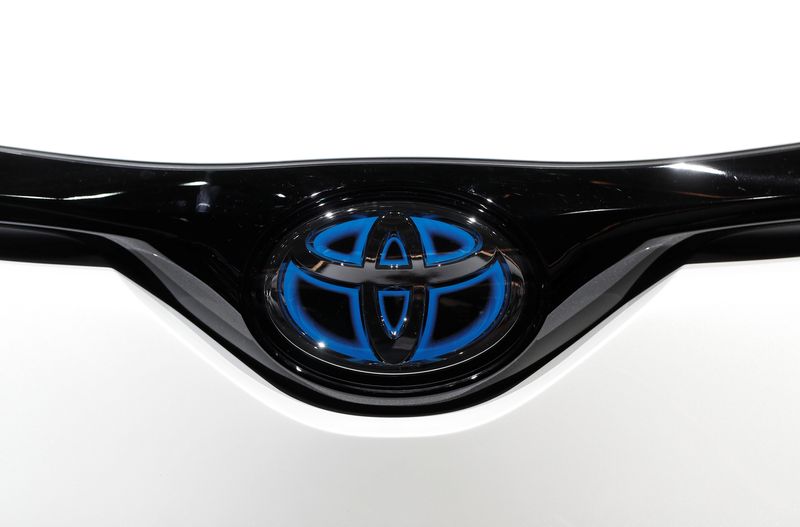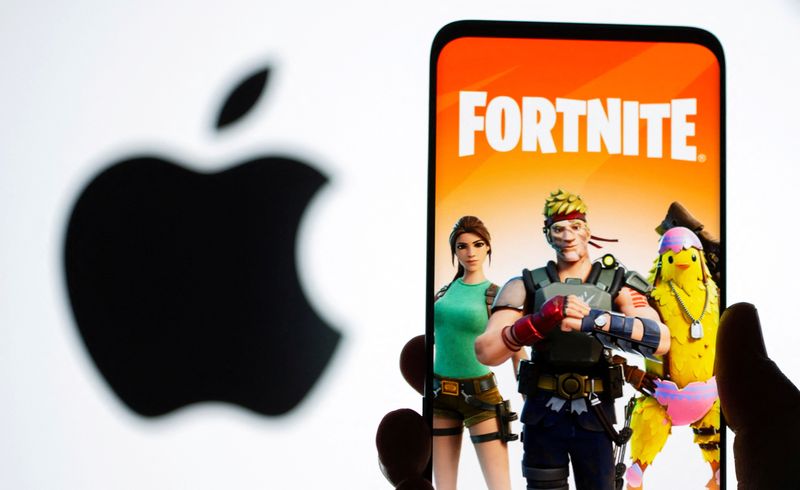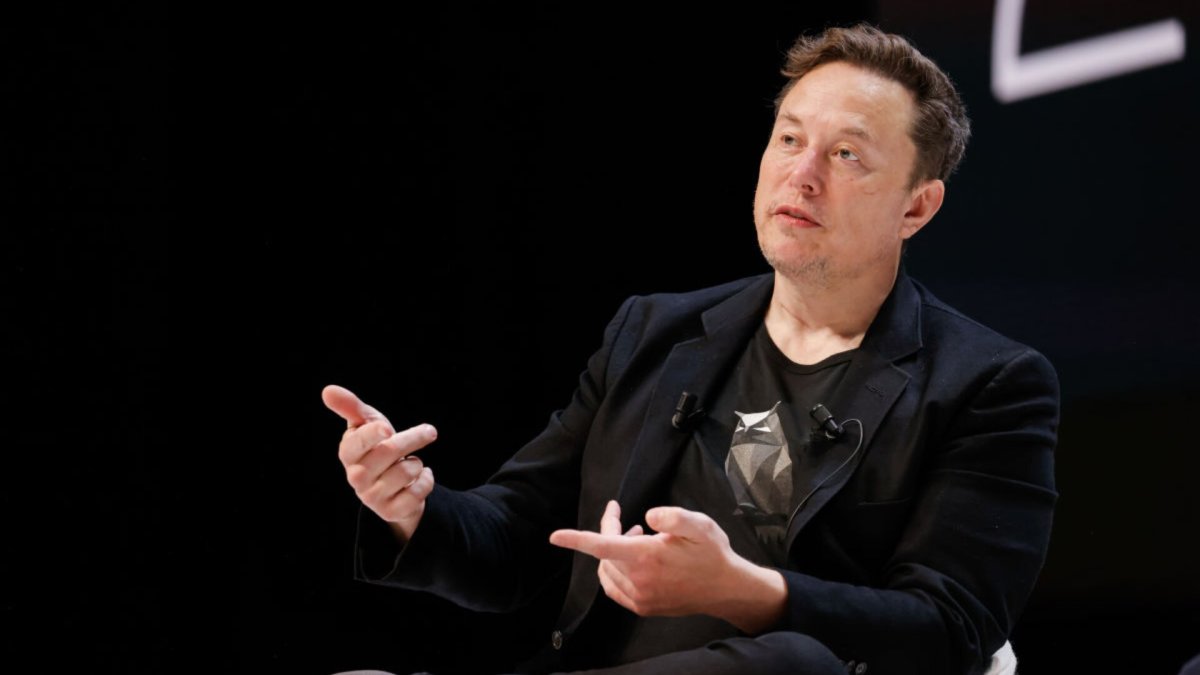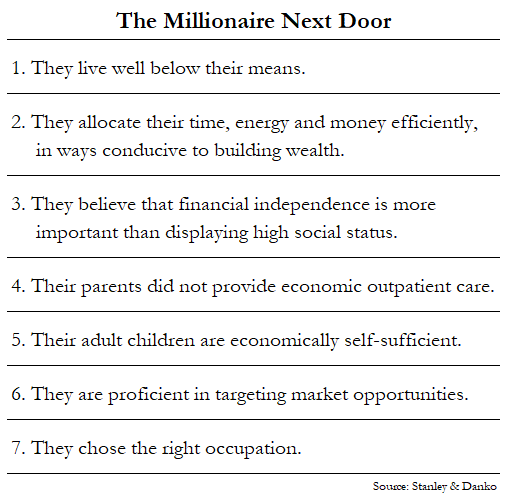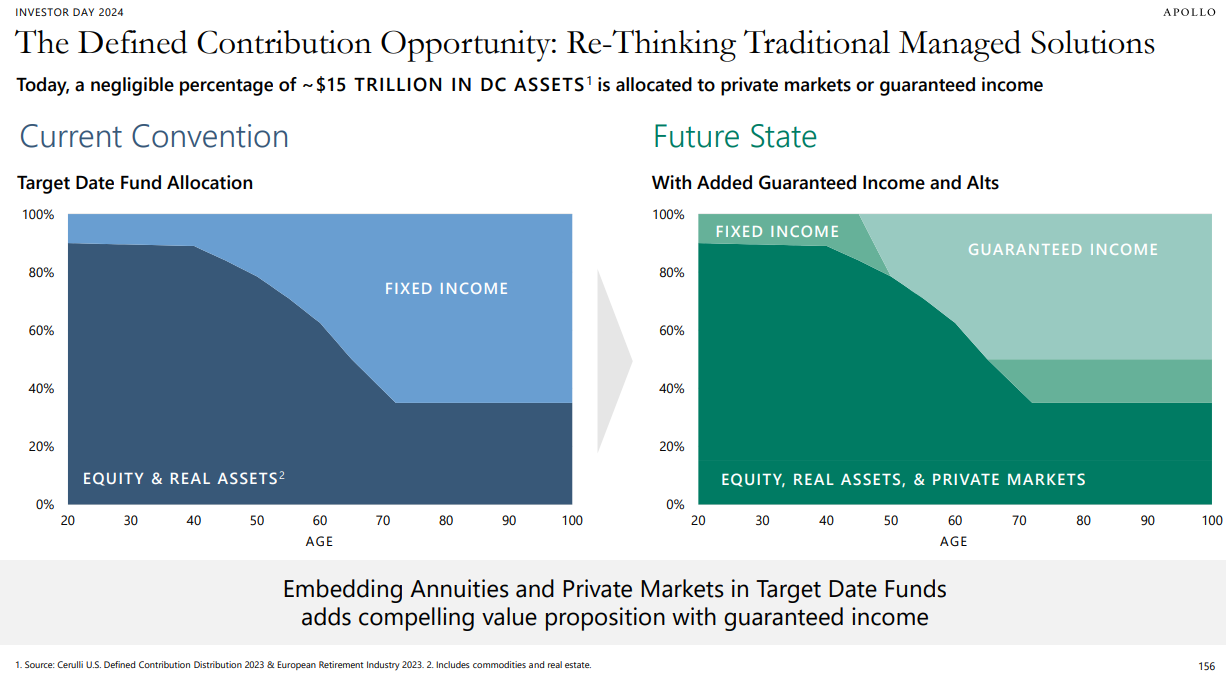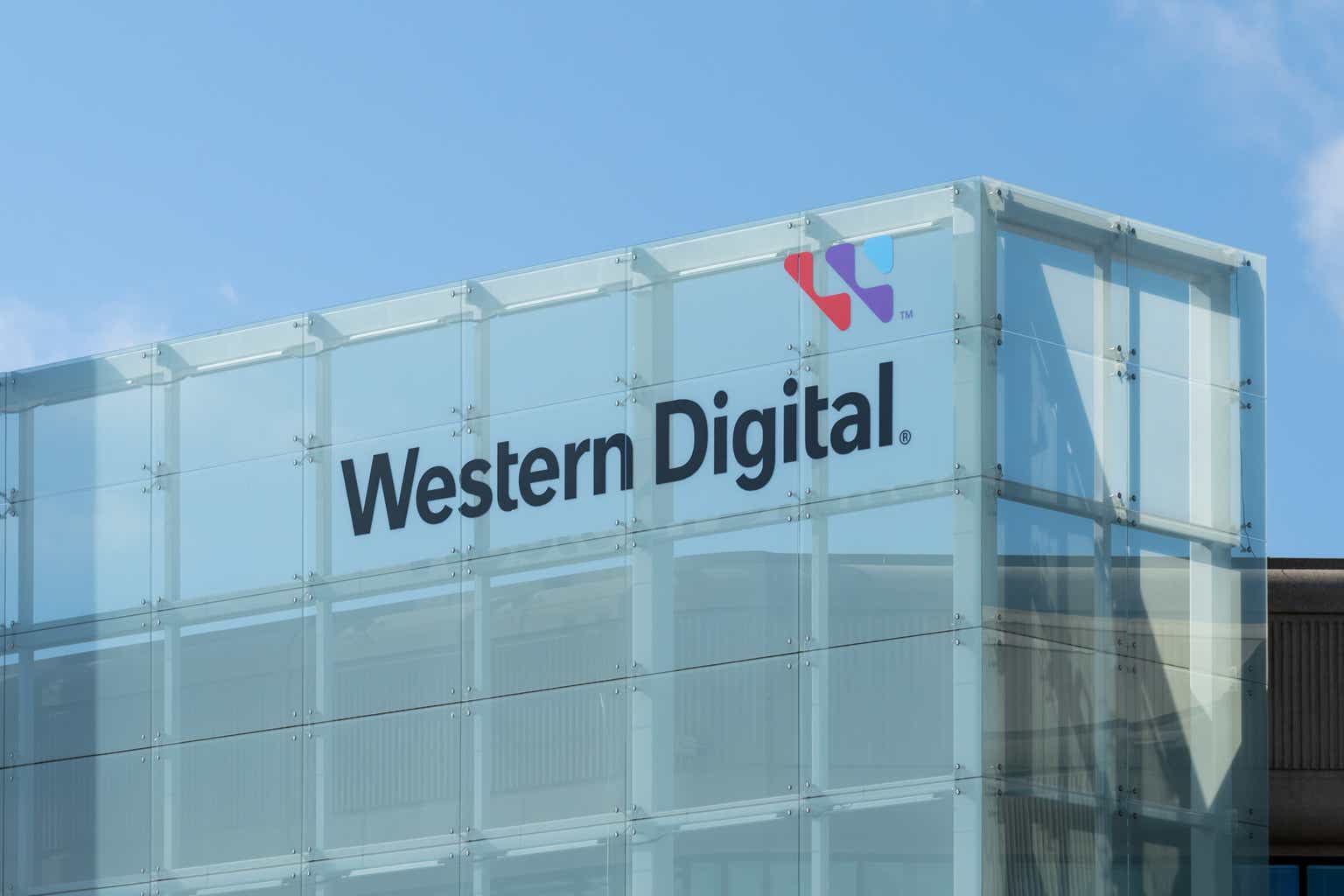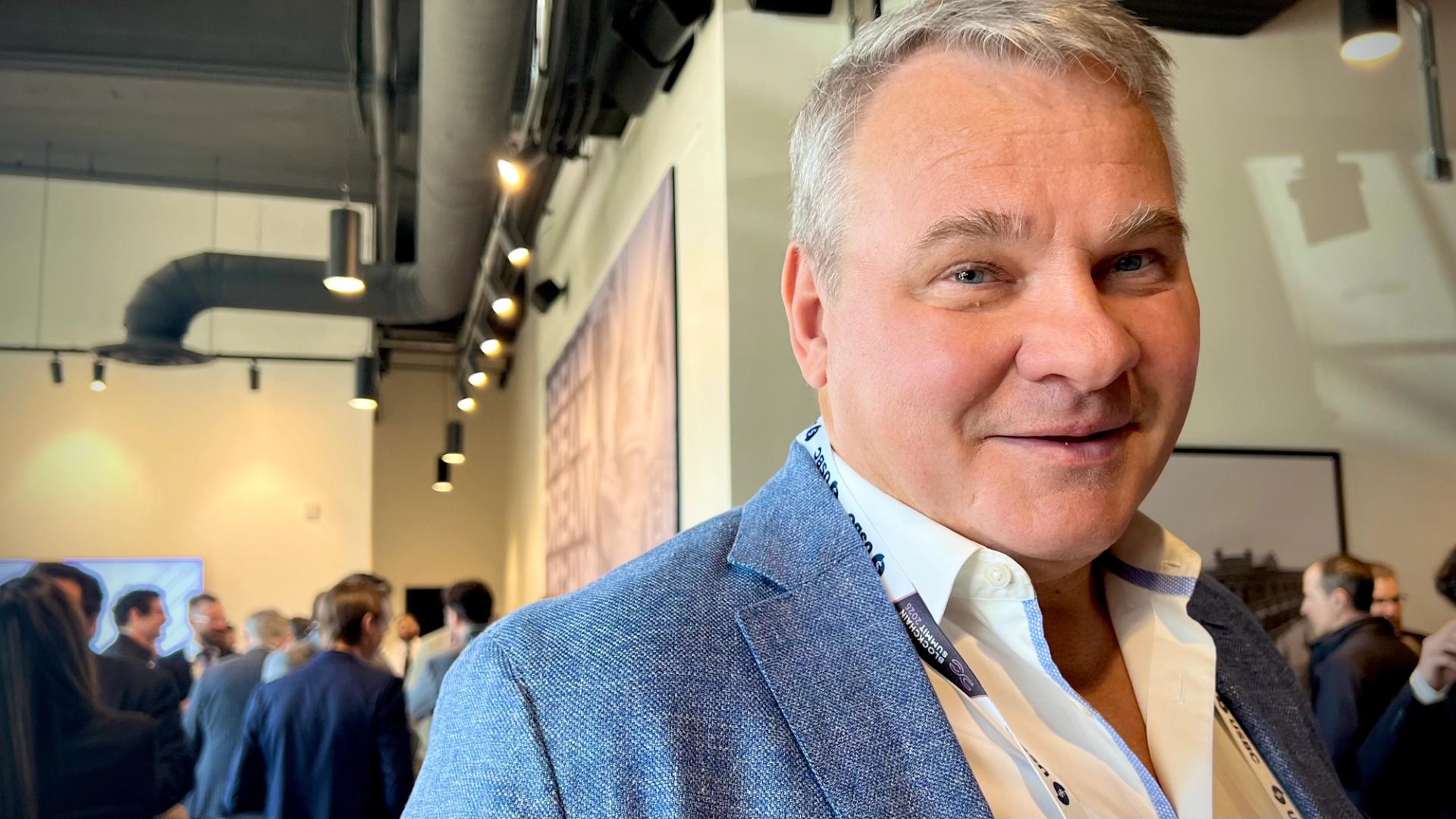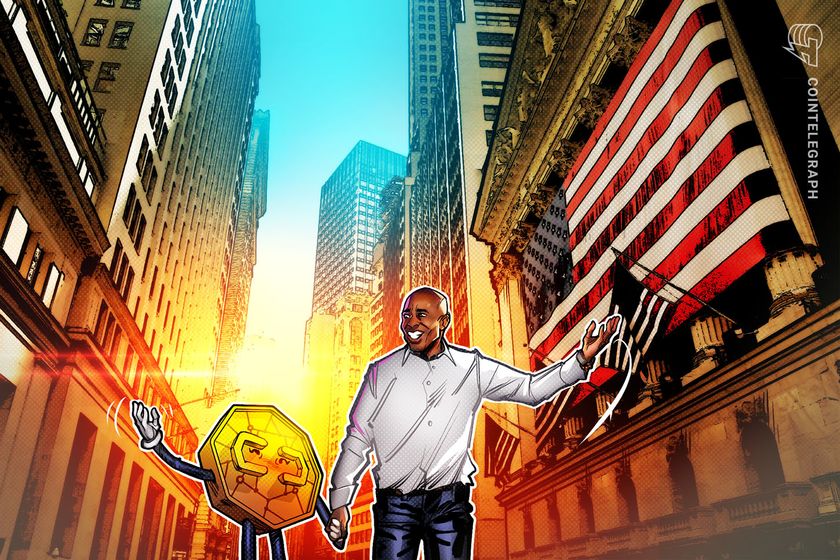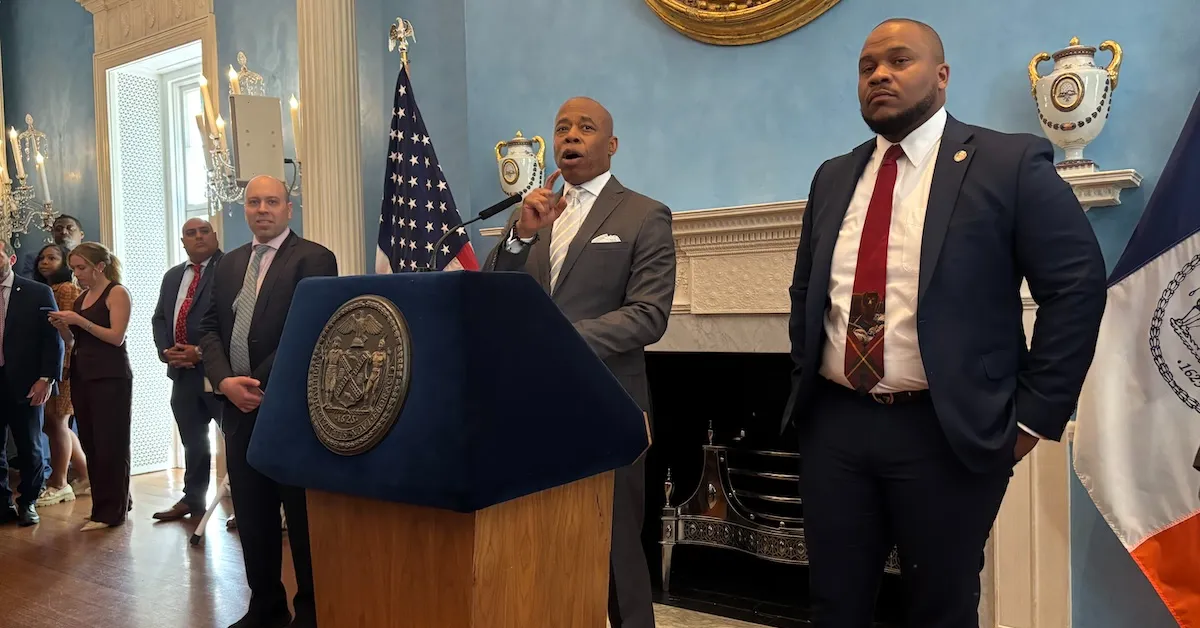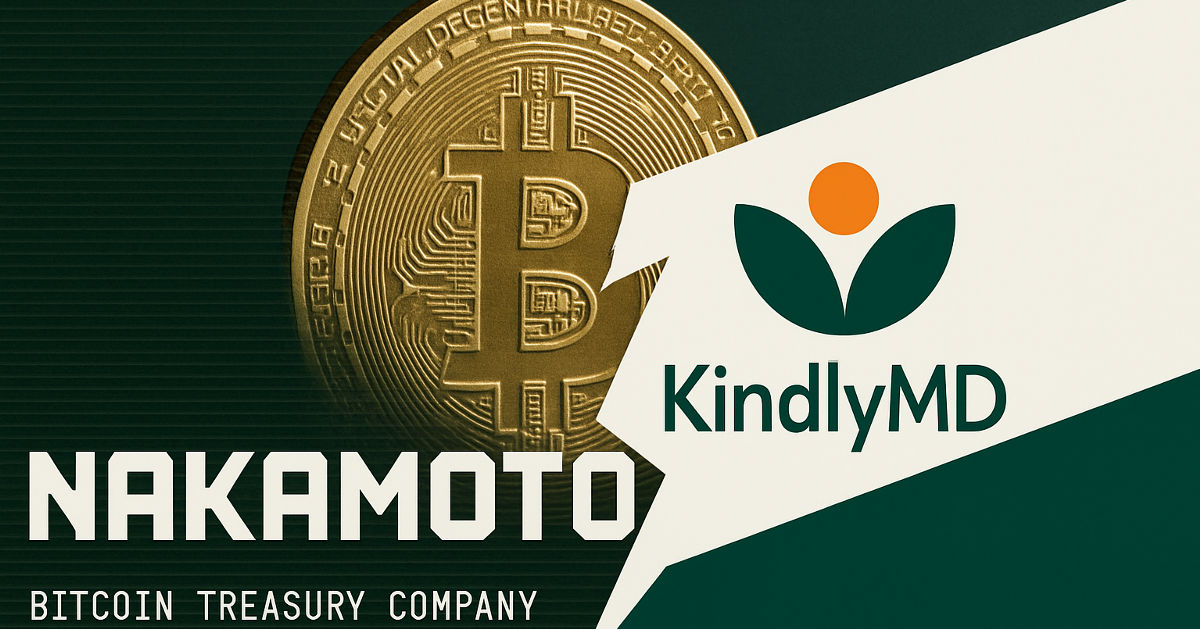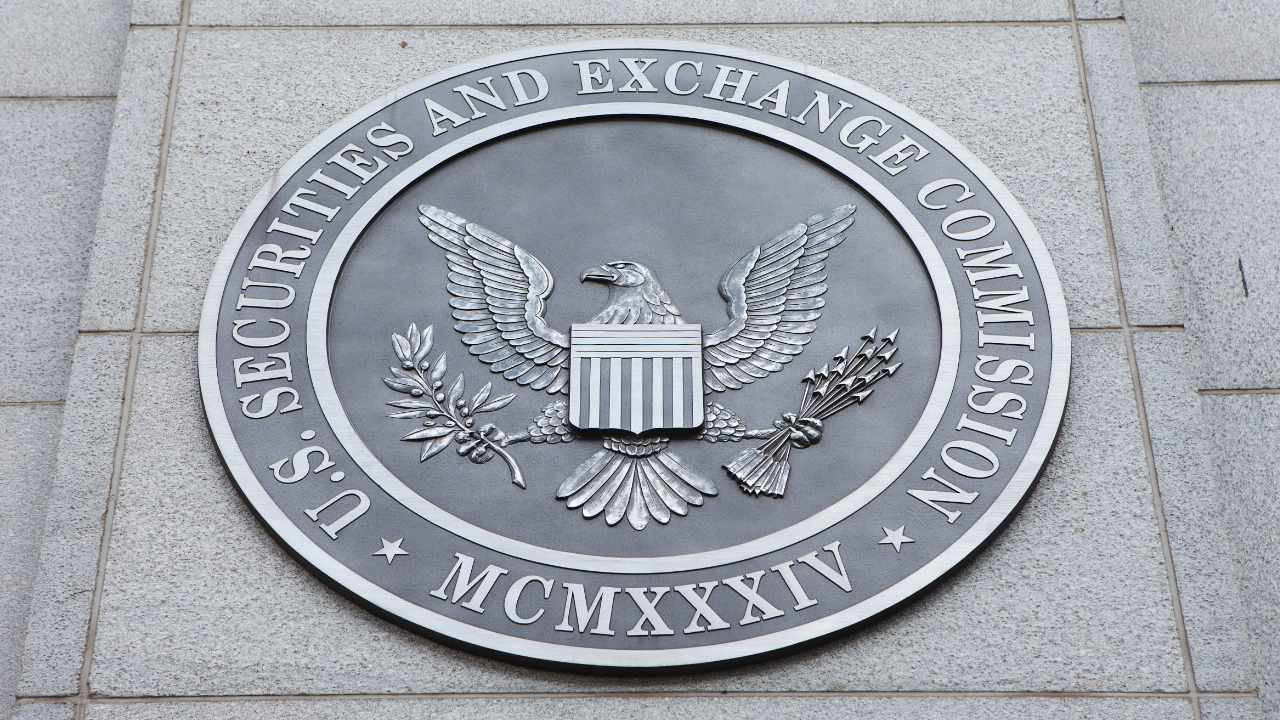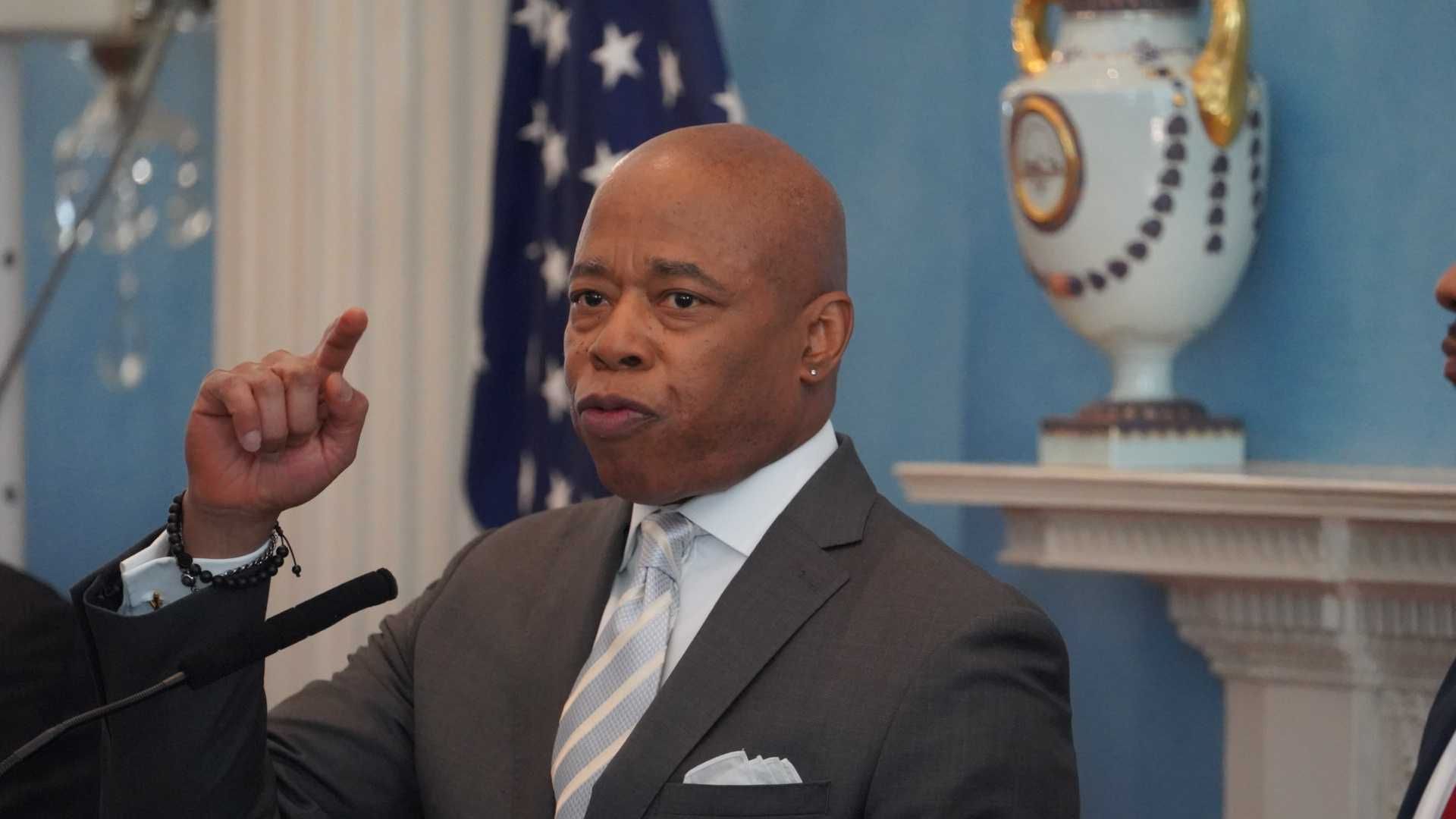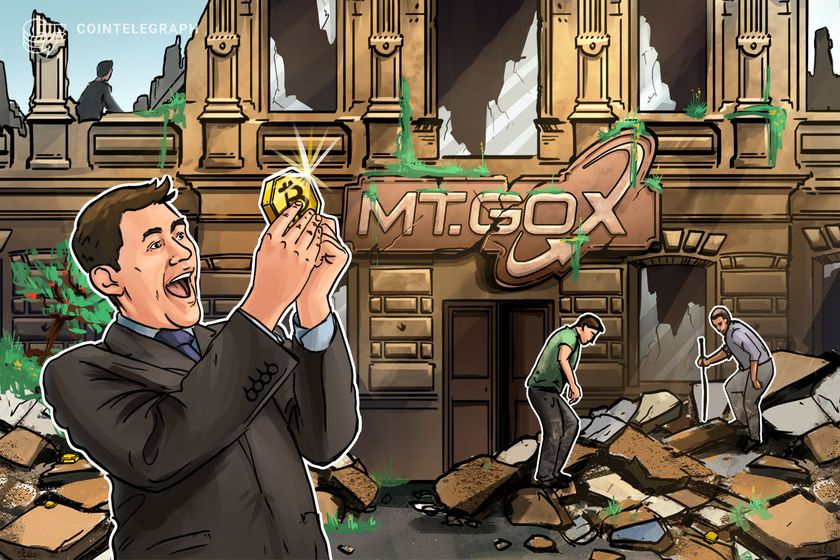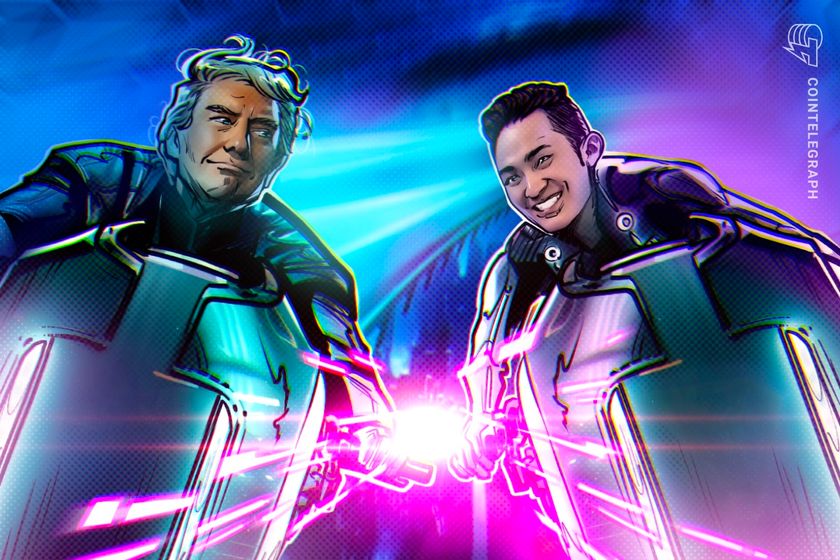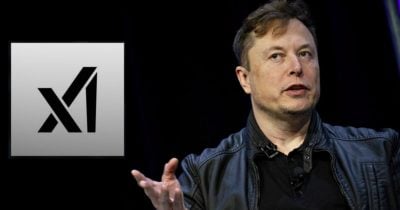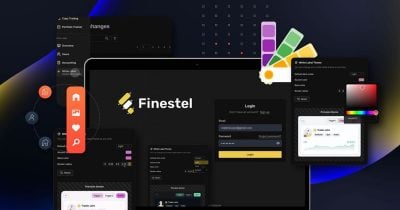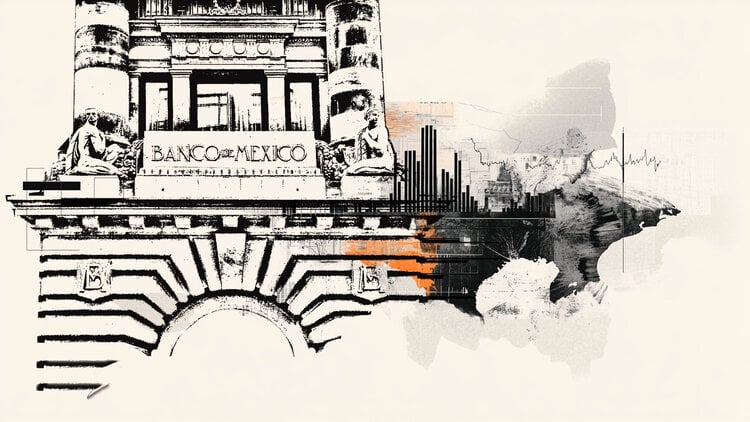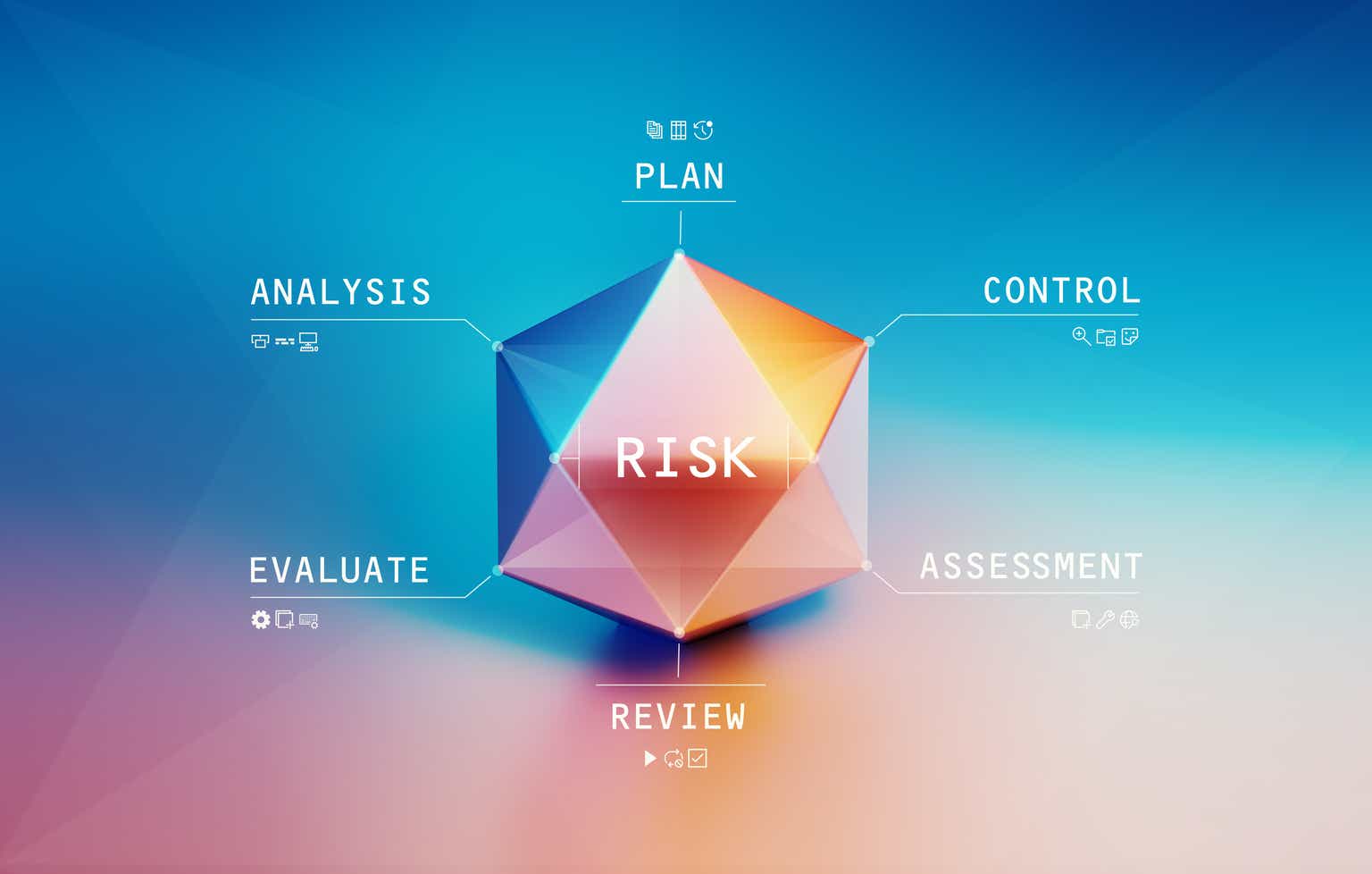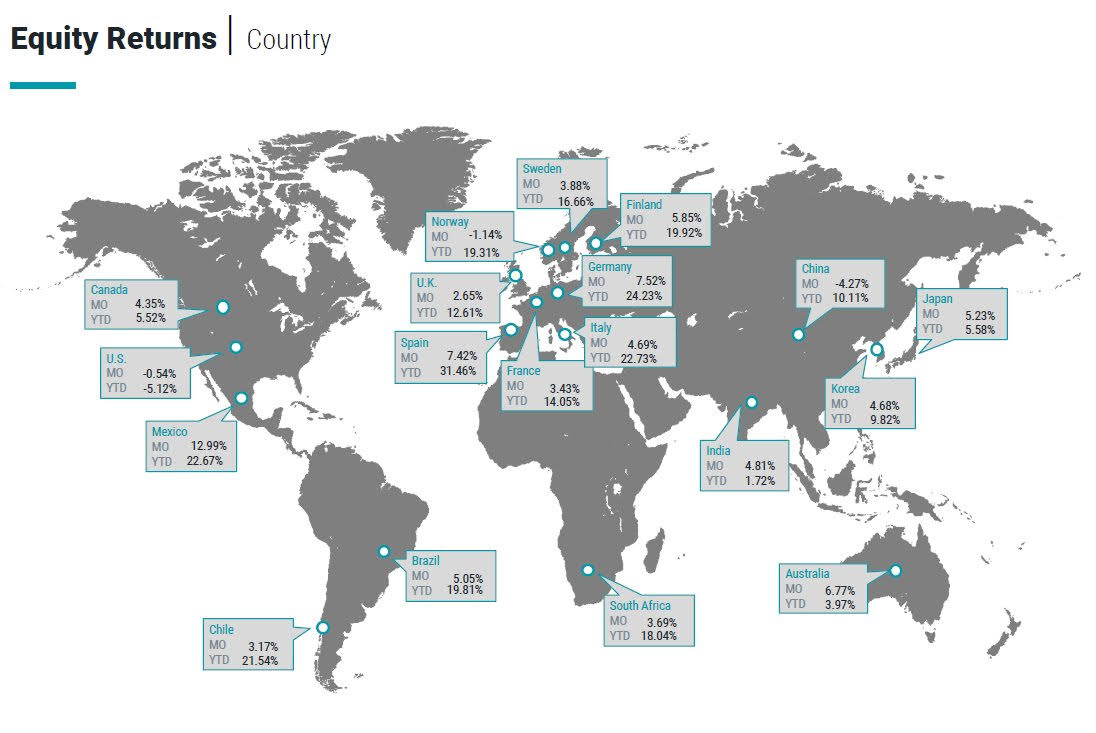Transcript: John Montgomery, Bridgeway Capital Management
The transcript from this week’s, MiB: John Montgomery, Bridgeway Capital Management, is below. You can stream and download our full conversation, including any podcast extras, on Apple Podcasts, Spotify, YouTube, and Bloomberg. All of our earlier podcasts on your favorite pod hosts can be found here. ~~~ Bloomberg Audio Studios, podcasts, radio News.… Read More The post Transcript: John Montgomery, Bridgeway Capital Management appeared first on The Big Picture.

The transcript from this week’s, MiB: John Montgomery, Bridgeway Capital Management, is below.
You can stream and download our full conversation, including any podcast extras, on Apple Podcasts, Spotify, YouTube, and Bloomberg. All of our earlier podcasts on your favorite pod hosts can be found here.
~~~
Bloomberg Audio Studios, podcasts, radio News. This is Masters in business with Barry Ritholtz on Bloomberg Radio.
00:00:16 [Speaker Changed] This week on the podcast, I have an extra special guest returning for the first time in a few years. John Montgomery, he’s the founder of Bridgeway Capital, established in 1993. And the firm is really a very interesting mix of quantitative value-based and factor-based investing. It’s really none and all of the above. It’s a little more nuanced and sophisticated than that. The firm first came to my attention ’cause I was kind of intrigued by the idea of donating half their profits to, to charity. That’s unusual in the world of finance. In addition, they’ve put up some really impressive numbers over the past 30 years, which has given them the opportunity to donate tens of millions of dollars to their favorite organizations. I thought this conversation was fascinating and I think you will also, with no further ado, Ridgeway Capitals, John Montgomery.
00:01:17 [Speaker Changed] Thanks Mary. It’s great to be here.
00:01:19 [Speaker Changed] It it’s great to see you. Let, let’s, for people who may not be familiar with the firm and your background, let’s start with how your interesting and unusual career BS in engineering, ba in philosophy from Swarthmore. Then you get a graduate degree from MIT and you go to Harvard Business School. What was the career plan?
00:01:42 [Speaker Changed] The career plan originally was urban development and transportation. So that was my first career, was working with various bus and transportation companies to improve the quality of life in the cities. People ask how does that relate to investing? And I say, well they’re both service industries, right? They’re both people intensive and those are the the elements that I love.
00:02:06 [Speaker Changed] And I gotta imagine there’s a ton of data analytics and optimization thinking that goes into both.
00:02:14 [Speaker Changed] That’s true. I like the intersection of people and, and analysis and both industries give a lot of opportunity that I love serving people. They’re both service industries. So I’m a happy camper. That,
00:02:26 [Speaker Changed] That makes a lot of sense. You, you were pretty early to computer modeling and statistical methods as a research engineer at MAT, this is the late 1970s. That sort of data analytics wasn’t really well understood back then. How did that background help when it comes to modeling portfolios or applying those methods of statistical analysis to investing?
00:02:52 [Speaker Changed] Well, the statistical side definitely comes from my degree and then work as a project manager at MIT. So you’re right, late seventies till 1980, the investment piece of that didn’t come till business school about three, four years later. And that was kind of, you could say by chance or on a lark, I thought, well, you know, there’s an opportunity cost of stepping out of your career Sure. Where you have a, you know, a paycheck to go back to business school full time, which I did and thought while I’m here I’ll take a few investing courses and see if I can use those to earn back the opportunity cost of going to business school for two years.
00:03:32 [Speaker Changed] So from transportation to finance, that sounds almost, but not quite purposeful. Is that, is that a fair description?
00:03:40 [Speaker Changed] I think that’s a very accurate description. So, and, and actually didn’t leave the transportation field immediately after business school. I was in an investing course and we’re doing a case study professor in the class and ask the question, who here thinks that they’ll be able to outperform post leaving Harvard Business School, this track record And 80% of the hands go up in the room. I’m not one of them, by the way. So the whole
00:04:10 [Speaker Changed] Class from Lake Wobegon, everybody’s above
00:04:12 [Speaker Changed] Average. Yes, yes, exactly. I mean, and I immediately got the 80 20 rule. It’s like, wait a minute, this can’t be, and if this is a microcosm and the methods that we were using to think about the markets and valuation and net present value, kind of CFA classic kind of analysis, if this is a microcosm of Wall Street in five years, which probably it is, then quantitative methods should give you a leg up on the competition for a lot lower cost.
00:04:40 [Speaker Changed] So you’ve previously discussed the epiphany you had at Harvard Business School. Is that the epiphany or was it something else?
00:04:47 [Speaker Changed] That was a major piece of it? I would say the, the primary insights were behavioral finance ones we would call, like I didn’t, I’d never heard the word right. Behavioral finance at the time.
00:04:57 [Speaker Changed] It, it, that as a phrase didn’t exist for another 25 years.
00:05:01 [Speaker Changed] Probably not. You know, you see, you watch, I once had a boss who said this guy has enough sheep skins to skin a sheep. But if I ever did go back to school, the next degree I would love to have is in psychology. Really? ’cause I, there’s so much there and especially the intersection of psychology and money.
00:05:18 [Speaker Changed] When, when do you finish up at HBS? What, when, what, what year was that?
00:05:23 [Speaker Changed] 1985.
00:05:23 [Speaker Changed] Alright, so what do you do between that and 1993 when you launched Bridgeway?
00:05:29 [Speaker Changed] So the first thing I did was investing as a hobby. So that was my advocation for the next six years. And my personal track record and investing was about twice the market for those periods. Right. In a, in a good period, scalable
00:05:45 [Speaker Changed] Or kinda little aberrational
00:05:48 [Speaker Changed] Findings? No, reasonably scalable. Reasonably scalable. I would say enough that after six years I had the thought of making my advocation my next career and did something that was, was modeled to me by the mayor of Houston, my hometown at the time. And that is to take a year off between careers. He had actually had four careers in his life in different fields and every time he switched, he took a year off just to study the heck out of the next step. So that’s when I really studied deeply the research why what I’d been doing was working more about when it might not and writing a business plan for Bridgeway.
00:06:27 [Speaker Changed] That, that’s pretty fascinating. I, I took a year off between college and grad school, but I had no idea I was actually doing what you advocate I, or what the Mayor of Houston advocates. I just was kinda lost and not sure what to do next and spent a year thinking about it before pulling the trigger on law school. But your hometown is Houston, the firm is still located in Houston, right? Yes. Since 1993. That’s when you launched where you launched. And from the very beginning you said something kind of unusual about the firm. We want to donate half of our profits to nonprofit organizations. Tell us where that idea came from. It’s fairly unusual either in finance and I’ve been to Houston. That’s a kind of unusual idea in Houston as well.
00:07:23 [Speaker Changed] That’s true. If I gather around, you know, just random business people in Houston and say that we donate half our profits. I have to say, I get some very puzzled looks around the room. Not so much from other purpose driven people in different fields though, but yes, it’s different. Where did that come from? You know, we think things come from one place, but usually there are a lot of forces at bay. So I would look back to my father, who was a businessman and CEO of an oil exploration firm and believe that business was a way to change the world and engage. Sure. My mother was what I would think of as almost a professional volunteer. So giving back to the community, and this was in a time when the war on poverty, you know, was the slogan at the time. So I was hugely influenced by both of my parents.
00:08:14 But I would say also a conversation with my wife on the, the very first conversation of starting Bridgeway and it went something like this, lemme get this straight John. You’re thinking of leaving the transportation industry where you have a lot of experience and a W2 to start a company in an industry you’ve never worked with. No, no initial, no guarantees, no guarantees on the, on the money side. And I said, yes, we talked that through. I, I have to say I’m married to an extraordinary woman. I didn’t realize at that age of 37 how extraordinary she was. But she believes in supporting people who have a dream and she did that for me and for Bridgeway. So she was all in, she had two questions. Yeah. Question one. Can we still send our our daughters to college? That was like, I should have paid more attention to that question because my budget, my business plan was 50% of our net worth before it was all said and done. It was 150% of our net worth. Right. So it took three years to break even when my business plan had it at one. The second question was, do I have to go to cocktail parties?
00:09:33 [Speaker Changed] Why? Why would she
00:09:34 [Speaker Changed] Not her cup of tea?
00:09:35 [Speaker Changed] No, but I mean, why would she imagine launching a fund is gonna require it’s
00:09:40 [Speaker Changed] Just your
00:09:41 [Speaker Changed] Spa. Just like that’s sort, she
00:09:42 [Speaker Changed] Grew up in Washington DC around that’s, you know, academicians and government people. And her, her view of business was you have to go to cocktail parties in schmooze with people.
00:09:50 [Speaker Changed] Right. That makes sense.
00:09:52 [Speaker Changed] And having taken a course in negotiation at Harvard Business School, I immediately recognized the opportunity and said, dear, not if you don’t want to. So she only comes when she, when she desires to come wherever I am. But she’s an amazing soulmate and supporter of everything Bridgeway.
00:10:10 [Speaker Changed] That that’s fantastic. So, so you’ve been donating half your profits to these different organizations over 30 years, is that right?
00:10:19 [Speaker Changed] 31 years. So
00:10:21 [Speaker Changed] How much have you guys donated? What are the organizations you support? What, what’s been the response in the community
00:10:27 [Speaker Changed] Over the decades? We don’t give exact numbers. We’re a privately held firm since we donate half, we don’t report our profits specifically either, but I’ll just say it’s tens of millions. Okay. Over, you know, what’s 30 months?
00:10:39 [Speaker Changed] Substantial amount
00:10:39 [Speaker Changed] Of capital, substantial amount of capital. The bullseye of our giving is our own affiliated Bridgeway foundation. This is an extraordinary organization led by a powerhouse of a woman, Shannon Davis. Our mission statement focuses on ending genocide and preventing war atrocities of which there are too many opportunities in the world today. So that’s the, that’s the cross hairs of our,
00:11:08 [Speaker Changed] Lemme interrupt you right here. Sure. Because I know you have very quantitative leanings. How do you measure how successful you are in stopping genocides? It just, generally speaking, it’s hard to measure something that doesn’t happen. So you’re always engaging in counterfactuals. Yes. But how do you know if you’ve moved the needle?
00:11:31 [Speaker Changed] It’s probably no easier, no more difficult than things that we do on the investment side and in the stock market. There’s time series analysis. We actually hired an outside firm to come in and review the record of what we had done in our first engagement with an organization called the Lord’s Resistance Army. And, and if you want more details, there’s a book called To Stop a warlord that Shannon Davis wrote. I never thought we’d be able to tell the story at that level because you don’t wanna put at risk the people that sure are on the ground doing the, the, the real work. However, she found a way to do that and protect them. And so there’s a book that goes into a lot of detail on that, but people think there’s not a way to measure it. There is, and you’re right, being a quantitative statistical guy, you can bet that that comes up on the table frequently. Huh.
00:12:22 [Speaker Changed] Really, really fascinating. What’s been the response from the community?
00:12:26 [Speaker Changed] The smallest end community is the Bridgeway community. So that’s the 28 people at Bridgeway we call partners. Right. They sign on for this work because it’s in the mission statement. You don’t not know about it coming in and you don’t come if, if this isn’t right worthy of
00:12:40 [Speaker Changed] The life calling, you buy from
00:12:41 [Speaker Changed] Day one. And, and that’s, that’s everything. The community of Houston, I would say less so, but it’s, it’s specific to individuals. So every once in a while you, you get somebody who’s like, unbelievable. That’s amazing. And can I come, huh? That level we have partnered with other organizations, one of those being Howard Buffet, Warren Buffett’s son that does substantial philanthropic work.
00:13:07 [Speaker Changed] Is, is he in Texas?
00:13:08 [Speaker Changed] No, no, he’s in Nebraska. But we have partnered with him and work in the Ukraine. Worked in the first year of getting generators in for obvious reasons and getting the grain out for obvious reasons. I tell people at Bridgeway, we don’t know squat about farming, but Howard Buffet does. And the third thing is documenting war crimes. And that’s actually something that Bridgeway Foundation knows a lot about,
00:13:33 [Speaker Changed] Documenting war crimes,
00:13:35 [Speaker Changed] Documenting.
00:13:36 [Speaker Changed] And what do you do? We does this then go to the Hague, to the un. What do you do with, once you’ve documented, and it should be fairly substantial in Ukraine considering the Russians have been bombing civilian hospital schools, infrastructure, apartment buildings. That it, it looks horrific. What do you do with all of that information once you’ve documented a war crime in Ukraine? So
00:14:01 [Speaker Changed] It depends on what national or international jurisdiction engages. So optimally you like to keep it at the country level if possible. The international criminal court is the other place that you can take a case and that’s where That’s in The Hague.
00:14:17 [Speaker Changed] That is in the Hague. Okay. Yes. So so that’s what I was, I was really thinking about. Do they take these on as individual cases or are they kind, you know, it seems like the UN is sort of paralyzed ’cause of you just have one voting member say no and that that’s that
00:14:32 [Speaker Changed] At the, one of the indices of the international criminal court was Dominique Angu who was a general and the Lord’s Resistance Army, the first conflict that I mentioned earlier. And we played a major role in getting him to the Hague to stand trial for justice. So wow, win win for justice.
00:14:51 [Speaker Changed] And
00:14:51 [Speaker Changed] Then, and as a deterrent by the way, to kind of thugs of the world that think they can get away with war atrocities,
00:14:57 [Speaker Changed] What one would hope, what happens when you have somebody like Putin who’s kind of hard to reach and is SCOs in Moscow and you know, how many hundreds of thousands of people have been killed? Civilians non-combatants killed in the Ukraine. How, how do you reach someone
00:15:16 [Speaker Changed] Like that? I would say, you know, one step at a time and then, you know, it’s a lot of hard work slugging through and then occasionally you just need a stroke of good luck for something going the right way. Typically it takes more time. You know, they say the arc of justice gets there, but it’s slow. That’s not an exact quote, but Sure. That’s my
00:15:35 [Speaker Changed] Martin Luther King
00:15:36 [Speaker Changed] Right. Summary of it. Yes,
00:15:38 [Speaker Changed] Sure. So we’ll come back to this ’cause this is really fascinating. I, I had no idea you were so international in, in the philanthropic sphere, but we’ll definitely circle back to that. Let, let’s start talking a little bit about that track record. You have a couple of mutual funds, a couple of ETFs. I’m assuming you’re running other stuff as a either separately managed accounts or a separate what have you. I know one of your funds since inception has outperformed the market by about a hundred basis points. And the other, I don’t know if it’s still a mutual fund, I know it started as a mutual fund is now about 300 basis points over market returns. Tell us about the mutual funds in ETFs you run on behalf of Bridgeways clients.
00:16:26 [Speaker Changed] Yeah, so let me, let me talk about the strategies. One you referred to is aggressive investors and as the name would indicate, it has high
00:16:35 [Speaker Changed] Beta,
00:16:35 [Speaker Changed] A very well high beta, but very high exposure to the factors that we want, that we believe in.
00:16:42 [Speaker Changed] So high active share. And when you say factors,
00:16:45 [Speaker Changed] Yes, very high active
00:16:46 [Speaker Changed] Share. So you, I, you know, I should have mentioned this earlier, what, what a lot of people call smart beta, you guys were doing long before anyone had a name on it. You’ve been doing smart beta, you’ve been doing factor investing a long time. Tell us a little bit about the sort of factor investing that drives bridgeways returns.
00:17:04 [Speaker Changed] Well, these are factors that we believe in. First of all, my, some of my co-portfolio managers will bristle if you refer to us as a factor based firm. I own that a little bit more, but it’s a fair point in the sense of being systematic, statistically driven over long periods of time. But there are human elements, like if, if, if there were no human element, everybody would be operating the, the identical strategy out there. So yes, we believe in value, we have our own proprietary mix of metrics and we can show statistically based on data over decades why we do that.
00:17:41 [Speaker Changed] So let me stop you before you go on to the next one. When most people hear value, they immediately think, you know, low pe, low price to book ratio. Your approach to value, I know is a little more sophisticated than that. Put some flesh on the bones. Tell us about bridgeways value approach.
00:18:02 [Speaker Changed] So we believe in value, quality and sentiment or the three primary legs of the stool within that. One of the things that we’ve done for a long period of time is mix different measures. So, and why do we do that? It’s because it gives you a more stable return stream over time. So if academically, you know, paper, when I was in business school came out Fama French and value has the three
00:18:28 [Speaker Changed] Factor model, the five factor model.
00:18:30 [Speaker Changed] And then, and the three factor then was price to book. And it’s a metric, but we could show statistically that if you match it with things like pe with things like price to sales, which has its own part, think through the balance sheet and the income statement, different ways to measure value, that putting them together in a efficient way gives you a, a steadier stream of returns into the future. So that’s why we do that. There’s a very interesting output of that though that comes. So I was at a conference, I don’t know, I’m gonna say maybe 12 years ago or so, paper presented by Novi Marx on quality. And he’s personally, like, everybody’s excited, I’m excited. We go back and the first thing we all always try and do is replicate the work of it’s new. So we replicated the work, we we put it into see could it help our models? And the answer was no. Do you know why the reason was no, because
00:19:29 [Speaker Changed] You already had quality
00:19:31 [Speaker Changed] Represented. And in Verly we had already included quality in the, in the process because of
00:19:36 [Speaker Changed] Multi, that doesn’t surprise me because you’re, you’re talking about different metrics and when I think about value and I, I also think about value traps and I know you cannot generate the numbers you have if you’re constantly buying stuff that’s cheap, but low quality, high debt, all these other issues that come up eventually those things have to underperform. Yes. So, so I kind of had the sense that you guys have quality exposure just by your long-term track record. So you reproduce no v’s work. Where do you go from there?
00:20:11 [Speaker Changed] There’s always a next step, Barry, if I take a look at just three of our strategies currently, it gives you a feel for the breadth of what we do. So one would be our small value strategy and you might think small value that seems pretty plain vanilla mention the research on value that we’ve done. We try and incorporate some things and how you incorporate them into the portfolio construction, where you constrain and where you don’t like how much are you willing to take on of sector risk. But our omni small value strategy is a strategy that we designed specifically for the purposes of an organization called Buckingham or bam. Then it’s now sure familiar with them. It’s it’s now called Focus Partners Wealth, great friends of ours. And our small value, omni small value fits into their allocation in a way that’s efficient for their portfolio construction. Now what’s bridgeways advantage? It’s our size. And this is something that’s true across all of our strategies currently we have a huge leg up being a smaller organization. Several reasons. Think of the omni small value because we’re smaller and we don’t have hundreds of billions under management, right? We can go deeper on small, you go
00:21:27 [Speaker Changed] Micro cap and
00:21:28 [Speaker Changed] Deeper to a degree, our benchmark is still the Russell 2000 value index. Okay? But our strategy is x real estate and utilities because our partners focus wealth partners has separate strategies for that. So we don’t duplicate that. And so that’s an example of the kind of research that we do. How does that affect the returns? Is that a, is that a good idea to do? But bridgeways own small size means that, that we don’t have Well it means several things really. Number one, it means our transaction costs are less, which based on your career, you know exactly. Sure. The importance of that. So if you’re a trader and I give you a, an order on a particular stock ticker symbol and say, go buy me a thousand shares of that and your, your job is to get this completed at the best price possible, however you wanna measure it, and I give you one ticket for a thousand shares and another ticket for 50,000 shares, but I’m gonna hold you accountable to the same price. Right? Which one do you want?
00:22:32 [Speaker Changed] Well, from a back in the day when it was 5 cents a share, you wanted the 50,000 share order. But if you’re, that’s not how you’re getting paid. Well the thousand share order is much easier to get done at a good price. Yes. 50,000 shares, especially a small cap. You may move the price up. You’re certainly not just absolutely lifting the offer and, and walking away with 50,000
00:22:53 [Speaker Changed] Shares. So for the investor, you, you want the smaller one that gets done more quickly. If you can get it done more quickly, it’s likely at a more favorable price. You, you’re less likely to move the price of the security in an unfavorable way. And that same thousand shares will be make a more meaningful contribution to a smaller shop than to a larger shop. Same number of shares is just gonna be, you know, 0.001 of the portfolio. Why even waste your time at Bridgeway? It’s more meaningful. That’s a big deal. And the last part is something that very few people I hear talking about and that’s that our effective universe is a larger universe. So that, that gets into our next strategy that I’d like to highlight, which is our global opportunities. Sure. This is a long short strategy. It’s global.
00:23:40 [Speaker Changed] This is the one that’s a hundred percent long, a hundred percent short. Yes. So less correlation to the market volatility doesn’t matter if anything volatility could actually help.
00:23:51 [Speaker Changed] Returns can. So
00:23:53 [Speaker Changed] No guarantees, but it could.
00:23:55 [Speaker Changed] Jacob Pni who, who led the research for a two year period that resulted in three peer reviewed articles, which for a firm our size is an astonishing achievement. He likes to say market agnostic is the, so long short, the success for us is defined as if, you know, the direction of the market tells you nothing about the direction of this, of the returns of this strategy. Well
00:24:22 [Speaker Changed] If you are long short, you should have half the volatility of long only, right? Yes. Is that a fair,
00:24:26 [Speaker Changed] That’s that’s pretty much right in line with our target. Okay. So half the volatility. So
00:24:30 [Speaker Changed] Is this an absolute return strategy? It is. The assumption is you’re picking stocks that you think are gonna do well and you’re also looking for stocks to short that you think you’re gonna do poorly and will do especially poorly in a drawdown. How’s that working out?
00:24:48 [Speaker Changed] It’s working out well. This is a big deal in terms of the design. A a paper that caught my attention was following 2008 and this paper took a look at all hedge funds that reported to be market neutral. And the bottom line was, most of the time they did a pretty good job. But when you really needed it in a downturn of 2008, the beta was 0.4. So about 40% of the downside. Well it’s like, okay, that’s cushion, but it’s not zero. It’s not zero, it’s not a, it’s neither an anti-gravity fund, nor do you expect not to be hurt. We’ve done research on the competition as well, and this is fascinating. And also just over the last week. So we’re now, you know, on two days that get as close to 20%, that’s enough to, you know, run your numbers and see how did they do. Our closest competitors to global opportunities have done a much better job than quote market neutral funds did back in 2008. All of ’em within a percent of zero, well no, one of ’em was 2% negative, but out of seven strategies that, that I looked at just earlier today, I would say doing a a better job.
00:26:02 [Speaker Changed] I, I think it was Cliff Asness at a QR had a paper out our hedge funds really hedged. Yes. And unfortunately the conclusion for a lot of ’em were not very much. And that sounds like it’s very consistent with the research, you guys
00:26:18 [Speaker Changed] Well we, we specifically designed this not to have the, the 2008 problem identified, but there are a couple more areas that we have a huge leg up on the competition with the strategy. Number one, again, getting back to our small size, our universe of stocks is so much larger.
00:26:35 [Speaker Changed] That’s both domestic and international.
00:26:37 [Speaker Changed] Yes. And especially internationally. That’s because out of the 9,000 or so stocks significant majority probably the, our bigger competitors simply can’t establish a meaningful position in, but our smaller, smaller
00:26:51 [Speaker Changed] Size. So there so’s a competitive advantage too.
00:26:53 [Speaker Changed] Oh it’s, and it’s big. Well, and and by the way, those are the ones that are less liquid, less efficient that you’re likely to, to win with active management.
00:27:02 [Speaker Changed] Huh. Really, really interesting. So we talked earlier about donating tens of millions of dollars, half of the profits of the firm to charity. How does that affect how you recruit employees? How you develop a compensation structure? Tell us a little bit about the impact of that on running an asset management business.
00:27:25 [Speaker Changed] Sometimes I get into conversation with a prospective client and you might hear something like, you know, it sounds like you’re good guys, you know, you’re philanthropically geared and you get awards is a great place to work. But all of that, like, put that aside. I just wanna talk about the investments and what I would say is culture is everything. It’s the housing within which we do what we do. So it’s very important and you can measure that in some statistical ways like turnover, I would say there are proxies for commitment at Bridgeway and then, you know, returns of the strategies. Why would you think that’s independent of the culture that you’ve built up?
00:28:03 [Speaker Changed] You also have an internal rule. The highest paid employee earns no more than seven times the lowest paid employee. Is that right?
00:28:11 [Speaker Changed] So statistically that’s probably true. We don’t measure it that way. There’s a new statistic that came out from the SEC required of public companies and those are some of the metrics that we look at currently. Some people think is like, oh, so you underpay that is absolutely not the intent. It’s just not to pay outrageous salaries on the top makes a lot of sense. So if you, you know, if you wanna make a cazillion the most money that you can make in our industry, you probably wouldn’t come to Bridgeway. If you wanna make an absolute livable wage and if you invest save and invest, you should be do very well over a full career then, then we’re purpose driven firm and we ascribe to Daniel Pink’s. What really motivates people is not money, but it’s purpose, which we have in strong suit. It’s autonomy and it’s mastery. So we really invest in our people by way of mastery, give them opportunities for learning and growth, invest by way of mentoring as well. And then the autonomy piece we’re trying to continually up our game with in a system of structure called traction or entrepreneurial operating system.
00:29:23 [Speaker Changed] And the firm’s culture also emphasizes accountability. Tell us about the firewood group. What what does that do?
00:29:33 [Speaker Changed] Okay, so the Firewood Group is a personal accountability group that’s not inside Bridgeway. And what happened is, in 1998, a friend of mine came to me and he said, so I want you to be on the board of directors. And he worked for a publicly held firm, but he was like, Charlie, I like you’re not in a position to ask me on your that board and I don’t know squad about that industry. And he said, no, no, not not the company board, the board of directors of my life. And he said, well what does, what does that look like? I’ve never heard of that. Out of that came the following observation. We were each members of groups that were great at support but lousy at accountability. And we both knew we needed accountability. So we formed this group specifically around the concept of, of accountability. And just to give you a very specific example, I had a life goal of ending genocide. This group starts and you know, I’m sharing life goals like, well you’ve made great progress on this one and this one, but we don’t, we think it’s time for you to actually turn the ignition on on this one. Out of that conversation. We turn the ignition on on our foundation and everything that you see that Shannon Davis is, is doing along with our partners.
00:30:44 [Speaker Changed] That’s really fascinating. And I would assume if the founder and CEO has that degree of accountability in his personal life, how does that then affect the culture of the organization? How do you bring your work ethic and your sense of accountability into the office?
00:31:04 [Speaker Changed] Well, I like to think that I model it, number one. Number two, we attract people for whom that’s an exciting concept. And number three, then you gotta actually live it out. And that’s where aspects of this structure that I call traction, or some people call entrepreneurial operating system come into play. There’s an annual goal setting process and most companies have that, the 90 day goals that they refer to as rocks. There’s a very high level of commitment toward, it’s like when you, when you take on that I’m gonna do this in the next 90 days, everybody’s looking at it as very high profile. It’s online, we have to report to the all of the partners, the leadership teams experience, and then every partner at Bridgeway, that’s every person that has a long-term commitment to and from Bridgeway has to do the same thing.
00:31:52 [Speaker Changed] So when I, when I talk about accountability, one of the things I was thinking about is the company’s annual report where you guys kind of own your biggest mistakes. Te tell us about that.
00:32:05 [Speaker Changed] That’s something we started, I don’t know, maybe a year four or five. And it comes around accountability. The normal thing is this in business or in government or academia or journalism anywhere you, you know, you wanna learn from your mistakes, but you don’t wanna own ’em too publicly. Right. It doesn’t feel good. People might ask the wrong question. We had a, a lawyer, a member of our board of directors at the time that said, you do realize you’re like putting on a silver platter or something that people could sue you over. Huh? And my, my answer to that is like, yeah, I get that. That’s true. But you can’t cut it both ways. You either have to own your mistakes, get ’em out in the open, learn from them and make sure you don’t repeat ’em or you sweep ’em in under a rug and you just can’t do both. And I choose the former, our shareholders are investors, our clients are our boss. We have a fiduciary duty to them. And I had one, an early client say, you do realize like I’m your boss and you, there’s accountability there. I should know what’s really going on. And I’m like, I can’t argue with that. That is a brilliant statement. This woman, by the way, didn’t have a high school degree and I learned so much from her.
00:33:18 [Speaker Changed] Huh. Really, really fascinating. So let’s talk a little bit about what’s going on in the marketplace. There has been a shift over the past 20, 30 years to passive from active, especially from expensive underperforming active. I don’t put you guys in that category. You’ve done well. Your fees are, are kind of middle of the road. How are you navigating what’s going on in in the marketplace?
00:33:46 [Speaker Changed] A few things that I can point to. Number one is you always have to keep working to stay ahead of the game and adding value. And that’s, that’s the research part. So we like to say small incremental improvements, but it never stops. Number two, we were an early adapter of moving some mutual funds, converting them into ETFs. So we’ve done that. That was painful ’cause it’s costly out the other side. It’s been helpful for the after-tax return of the shareholders. So big plus there and those strategies are both in positive flows. So good for the advisor as well. And the last one is, you know, don’t make indexing in passive the enemy. What can you learn from them? So Bridgeway actually came to market with our blue chip strategy. To really be an index fund, you have to have somebody else calculating it, right? Right.
00:34:39 And there are all rules and, and we decided we weren’t willing to do that. We just wouldn’t call it an index fund anymore. But it’s a mega cap strategy that gets off of what I think of as the inefficient market cap weighting portfolio construction of almost every index fund. Not absolutely all of them, but all of ’em, right? We have more than a quarter century real time data. Like this has been a mutual fund, now it’s an ETF converted. You can look at that track record and draw your own conclusions. But I like to say market cap weighting is like a momentum strategy that you never rebalance, right? So you ride the wave up and then you ride it down. And that’s just not very efficient. That leads to more volatility. This strategy on average has different ways to measure it. Beta standard deviation draw down of very roughly 5% less than a market cap weighted index of, of a, a broad index like the s and p 500. So a little bit less risk we believe, not in every market environment, but you can measure it over the long term and last decade for example. And then a little bit more return. And why is that? It’s roughly equal weighted, which means you’re always investing a little bit more in what’s done poorly and harvesting a little bit from what’s done really well. That’s buy low, sell high. Isn’t that a basic investing principle? Sure.
00:36:05 [Speaker Changed] That makes and supposedly sense to mely that sort of rebalancing is one of the few free lunches in finance. So, so if you’re not doing market cap weighting and you’re talking about blue chip companies, how, how are you weighting the portfolio?
00:36:19 [Speaker Changed] So we look at the top 35, 36 companies, we make sure that we’ve got industry representation at the time of recomposition, and then we’re rebalancing quarterly and reinvesting dividends along the way. And I’ll say roughly equal weighting. So there’s some cushion on harvesting from the top. It can go up. Our, our rule of thumb is about 4% is the maximum weight in a strategy. So if Apple or Microsoft or somebody else is 8% of an underlying market cap weighted US index, we’re gonna be half of that. But it gives you a more diversified fund in mega cap stocks, which gives you some of the downside protection and some of the risk characteristics.
00:37:05 [Speaker Changed] Well, well as we’ve seen in year to date in 2025, the, the mag seven have become the lag seven. Yes. So not being full market cap weight certainly had have a positive impact on, on returns. What happens when those stocks are doing great. H how comfortable do you feel if you’re not full market weight of Nvidia, apple, Amazon, Microsoft, as, as they’re going higher and higher. That’s
00:37:31 [Speaker Changed] The discipline of any investment process in the design. So know the design of what you’re investing in, know when it’s likely to outperform and when it’s not. And then you need to be comfortable with those numbers. Huh. But in that strategy, you pointed out exactly when it would, you know, underperform when the top seven, you know, and you know, there’s a nifty 50 back in the,
00:37:52 [Speaker Changed] Well you and I remember the nifty 50 in the sixties, half our, our listeners yes, are unfamiliar with them, but people talk about the magnificent seven, like it’s something new. Yes. It’s 50, 60 years old. We had the same sort of yes, top heavy market happen when everybody clamoring into the same sort of blue chips. Yes. Being weighted on a non-capital basis, having other elements drive the weighting. How do you manage around that
00:38:22 [Speaker Changed] As a disciplined investment shop? We have everything documented in detail. So there are four portfolio managers on every strategy at Bridgeway. In theory, any one of the four can step in and do that job. One because they’re trained to do so, but two, because they have documentation of how to do it. In this case, Bluechip, I mentioned there’s a quarterly rebalancing process. There’s instructions exactly how you rebalance, how you take care of unusual situations, which might be a merger, an acquisition, a spinoff. Now a company in you, you and the portfolio is no longer one of the top 35, 36 by size. So what do you do about that? So th those are the kinds of exceptions that you document and otherwise it’s fairly straightforward. What,
00:39:09 [Speaker Changed] What you’re describing sounds like a very systematic process to evaluate securities and, and build a portfolio. Tell us a little bit about the things that go into that system.
00:39:21 [Speaker Changed] Let me shift gears back to global opportunities. Sure. Which is, which gives you more of the full breadth of how we do what we do with respect to stock selection and portfolio construction. The stock selection side, as I mentioned, you’re combining factors of value, quality, and sentiment. However, that’s within a framework of intangible capital intensity and what that said,
00:39:43 [Speaker Changed] Intangible capital intensity. Yes. So are these things like intellectual property, patents,
00:39:49 [Speaker Changed] Processes? Exactly. Exactly. Okay. So high intangible capital would be exactly the things you mentioned. Research and development. If you rank them by industry, things that float to the top would be pharmaceuticals, AI software, things. At the other end of the spectrum would be things like manufacturing, transportation, utilities. So you think of old economy stocks and new economy stocks is another way to think about ’em. But we’re measuring, literally ranking these according to intangible capital intensity. The high intangible capital intensity ones don’t work real well with the classic measures of value. For example, what we found is that sentiment is a stronger predictor of future returns for those. So we don’t only use sentiment, we’re always using the combination, but we’re gonna overweight the sentiment part of that. So we have these three categories of factors underneath, which as I mentioned before, multiple ones in the framework of intangible capital intensity, which is original research that Bridgeway did over a couple of year period and published papers on.
00:40:57 That’s the overall framework. Then you’ve got, in this particular strategy, it’s global and we like to be neutral exposure on things that we don’t care about or aren’t in the design and positive on the ones that we do. So what do we not care about sectors. So we’re always trying to move back to it to be sector neutral, which means the same dollars on the long side as you have on the short side. Similarly with sectors, sectors, countries, certain factors. Book value, for example, is a classic one. Don’t like that one as much. It’s problematic for reasons that relate. Well,
00:41:33 [Speaker Changed] Well book value doesn’t real, it it tends to measure physical plants equipment.
00:41:37 [Speaker Changed] Exactly. So
00:41:38 [Speaker Changed] It works much more heavily and IP kind of gets the short shrift there.
00:41:41 [Speaker Changed] Yes, exactly. So what that means is the, the industries that are on the, the low capital intensive part of the spectrum tend to do fine with the classical measures of value. So you can see, you put all that together, you constrain the portfolio according to certain things that you don’t want it to be exposed to. People come and say, oh, global opportunities that’s got China, I don’t want any China. Well, at any one point in time, we might be a percent or possibly even two positive exposure to China or negative exposure to China. On average, we’re targeting that 0%. So you’re not gonna get a, any value add over the long term shouldn’t be coming from the actual country or the sector. It should be the specific factors that we’re trying to give exposures to. And that leads to a much steadier stream of returns.
00:42:33 [Speaker Changed] That’s really in intriguing. So I, I’ve always kind of thought of you as sort of a factor shop, sort of a value shop, sort of a quant shop, a little bit of everything. Is that a fair, is that a fair description? I I don’t wanna overgeneralize Yeah, but you guys do a little bit of a lot of things. Yes.
00:42:53 [Speaker Changed] I would say that that’s true. The, the, the one thing that you left out, which is the hard piece and a significant part of, of our time is qualifying the data. Cleaning the data, especially on the global side. Data’s cleaner in the large caps on the US side for sure. And also the model assumptions. There’s cer certain assumptions built into the model. You get a strong pick. Are the reasons that those picks of a model come to the surface, ones that really hold true in the marketplace? Is there something that you don’t know, for example, regulations that have just come out in a, in a country where that are gonna change the earnings and, and financial characteristics that you care about with a particular model. So that’s part of the work and the scrubbing and, and you know, that’s why we chafe a little bit when people say, oh, you’re just a smart beta shop.
00:43:46 [Speaker Changed] Cl clearly there’s a lot more going on than just smart beta. All right. I only have you for a limited amount of time, so let’s jump to our favorite questions. We ask all of our guests, starting with what’s been keeping you entertained these days? What are you watching or listening to?
00:44:02 [Speaker Changed] One of my favorite recent ones was actually a South Korean series called The Extraordinary Attorney. Woo. And it’s a fascinating study about a woman who’s an adult autistic, brilliant person in a law firm in South Korea and her experiences navigating a non-autistic world and the adjustments that people do and don’t try and make assumptions that people make. You know, you might think that has nothing to do with investing, but, but the assumptions side and the statistics side and then the human interaction side and, and the behavioral side is all right there. That’s one of my top recent one
00:44:46 [Speaker Changed] Really interesting. Let’s talk about mentors who helped to shape your career.
00:44:51 [Speaker Changed] Several had a mentor that passed away last year. Henry Groppe soundbite from him was respect all people all the time, no exceptions. And it’s that last piece that’s really challenging. So I’m gonna put him as a top mentor. Had some in at MIT advisors there who taught me, never come to my office just bringing problems. Always try and bring solutions when you can. People that have engaged on a human level within these that didn’t have to. Some of the better things that I’ve learned. Jack Bogle certainly on the, the cost and structure side a little gritty, which is, I like, I think that’s fun. Those are some of my mentors.
00:45:36 [Speaker Changed] Hmm. Really interesting. Let’s talk books. What are some of your favorites? What are you reading right now?
00:45:41 [Speaker Changed] Right now I’m reading two books. One is called People Dare to Build An Intentional Culture. So you can imagine why that would be attracted to me. Chapter two of that book is about love. We don’t tend to use the word love and workplace. They say, well, a more acceptable word might be genuine caring. Okay. And so we think a lot about that. We play the Simon Sinek game of why is why is that important? And underneath that, why is that important? If you play that game at Bridgeway of why you’re doing what you’re doing and get to a core value. Caring frequently comes out among different people, board members, partners at Bridgeway. The other book is Jason SWGs, recent update on The Intelligent Investor. Sure. I’m halfway through that one. It’s a, it’s a thick read ’cause it’s really two books. Right. It’s been Benjamin Graham’s book and it’s Jason SWGs commentary on it. It’s great. And
00:46:38 [Speaker Changed] Not too long ago I saw you mention, was it Dan Leys The Truth About Dishonesty?
00:46:44 [Speaker Changed] Is that right? Yes. That’s one of my favorite. I it might be, it might be a decade old now, but wonderful book on humility in statistics and in non statistics.
00:46:56 [Speaker Changed] And our, our final two questions. What sort of advice would you give to a recent college grad interested in a career in either investing or finance?
00:47:06 [Speaker Changed] I actually had this opportunity just yesterday. It was somebody, I’m gonna guess he was about 25 years old and early stage in his career. And my advice is people scare you away when it’s a, a declining industry, or not declining, but where fee pressure is increasing. So the fee pressure has been very strong, different ways to measure it, but you know, fees are less than half of what they were a dozen years back. And that scares a lot of people away. Within that there’s a lot of change and within the change there are strategic opportunities. And because it doesn’t attract as many people think supply and demand there are great, there are kind of even bigger than normal mature company opportunities and not as many people coming in, you can make a big difference in that environment. I think it’s fun and fascinating. I would definitely choose this as a career if I were doing it all over again.
00:47:59 [Speaker Changed] Hmm. And our final question, what do you know about the world of investing today that would’ve been useful back in 1993 when you were first launching the firm?
00:48:09 [Speaker Changed] Wow. I was a contrarian by nature, but I didn’t understand the dynamics of chasing hot returns and, and panicking and downturns. Understanding that dynamic better would’ve helped not because not personally, but professionally. It would’ve given some good insights for the individual investor. I would say build your portfolio and learn how to not pay attention in the downturns if it’s long-term money. And by the way, if it’s not long-term money, you shouldn’t have it in the stock market. So it’s assuming it is long-term money. The only price you really care about is the last price when you want to take the money out and that wasn’t last week or this week ever. Whether it’s up or down, there’s volatility in between. All those numbers are irrelevant. All you need to know is the last one. In the first day. You’re gonna know that number, his years in the future when you’re actually gonna need it. Huh.
00:49:05 [Speaker Changed] Absolutely. Fascinating. We have been speaking with John Montgomery, founder of Bridgeway Capital. If you enjoy this conversation, well be sure and check out any of the previous 500 or so we’ve done over the past 10 years. You can find those at iTunes, Spotify, YouTube, Bloomberg, wherever you find your favorite podcast. Check out my new book, how Not to Invest the ideas, numbers, and behavior that destroys Wealth and how to avoid ’em, how not to invest wherever you get your favorite books. I would be remiss if I did not thank the correct team that helps put these conversations together each week. My audio engineer is Sam Danziger. Sean Russo is my researcher. Anna Luke is my producer. I’m Barry Riol. You’ve been listening to Masters in Business on Bloomberg Radio.
~~~
The post Transcript: John Montgomery, Bridgeway Capital Management appeared first on The Big Picture.




















